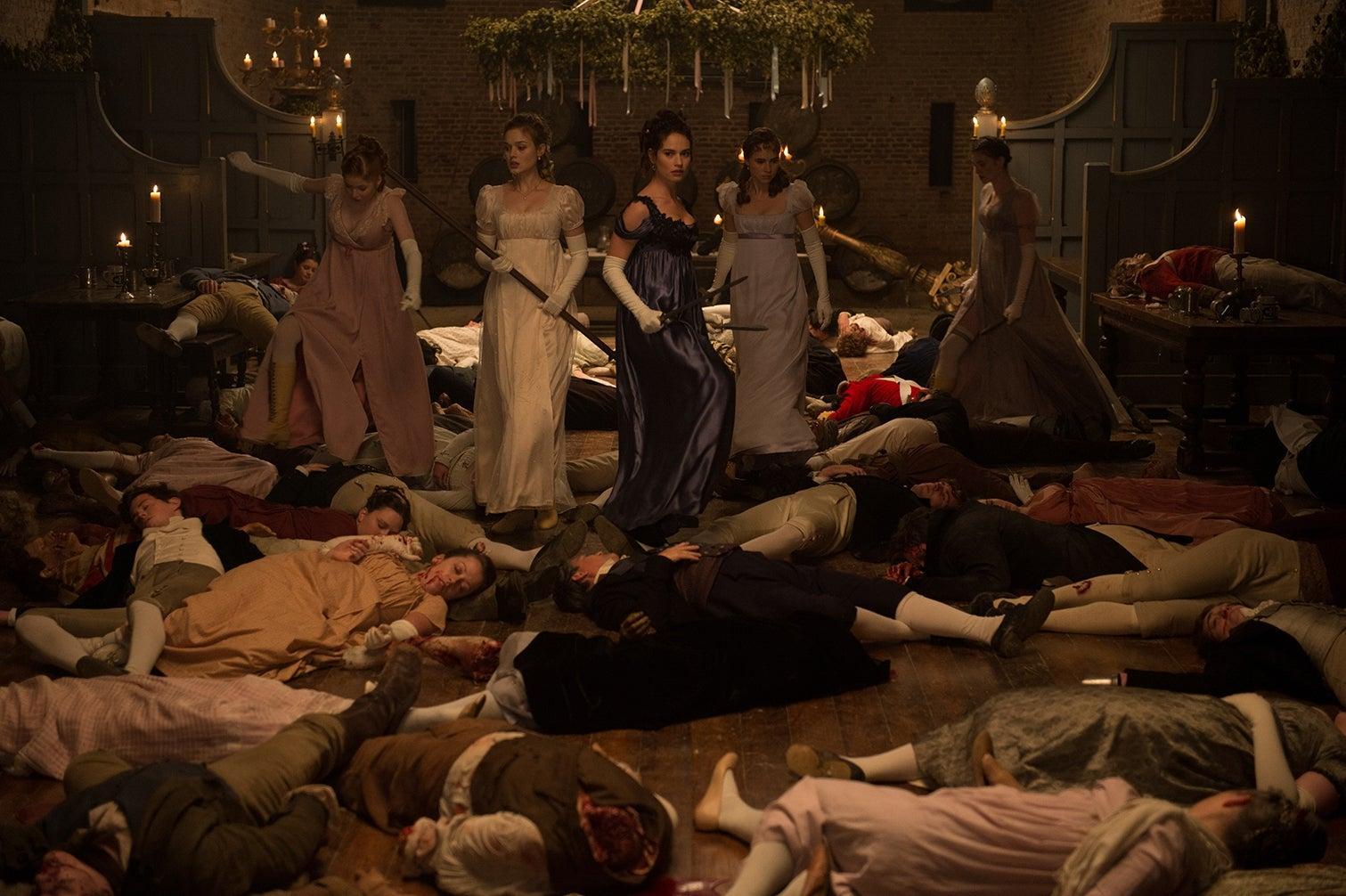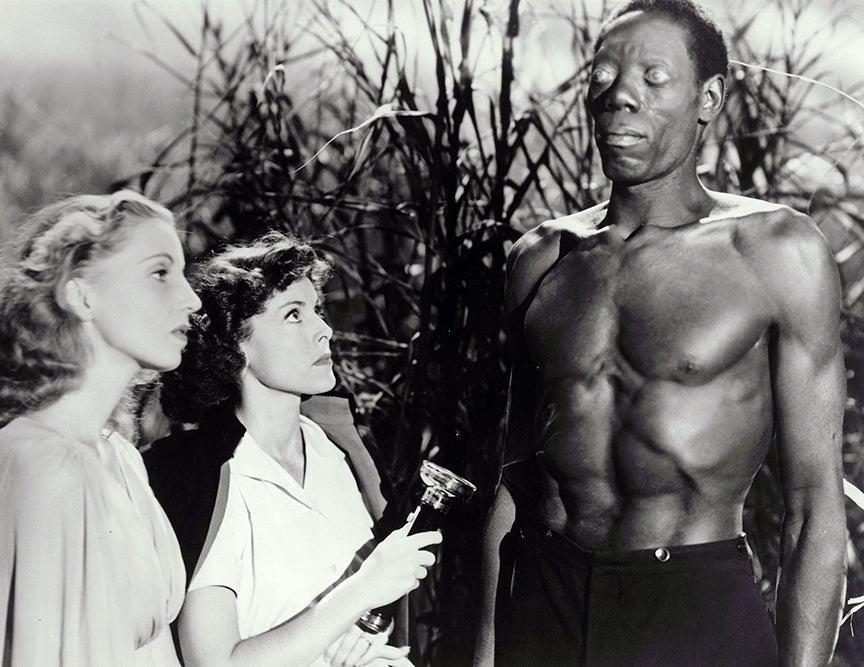Zombie movies have become hopeless cases that work as neither satire nor as horror
Inside Film: Jim Jarmusch’s new film, ‘The Dead Don’t Die’, highlights the increasing aimlessness of the zombie genre
We are all zombies now... according to Jim Jarmusch’s new film, The Dead Don’t Die – but it also highlights the increasing aimlessness of the zombie genre. When the lines between the living and the undead are so blurred, zombie movies become hopeless cases. They stop working either as satire or as horror. We’ve had far too many of them in recent years. They all have the same scenes in shopping malls, airports or supermarkets, in which the zombies shuffle along in the same daze that humans do, listlessly looking for two-for-one deals on groceries, or waiting to be processed through security.
The zombies in Jarmusch’s film gravitate towards what gave them the most pleasure when they were still alive. In the case of Iggy Pop’s character, he doesn’t have a lust for life so much as a desperate need for coffee – flesh eating is just a sideline. His main instinct is to go in search of that shot of caffeine that used to make him feel alive. He doesn’t drink instant either. As you would expect in a film from a self-respecting arthouse auteur like Jarmusch, the zombie prefers the real stuff.

The problem with zombie movies isn’t just their proliferation but the random ways they have mutated. They now come in all shapes and forms. In recent years we’ve had zombie costume dramas (Pride and Prejudice and Zombies), Nazi zombie pictures (Dead Snow), dystopian zombie sci-fi (The Girl with All the Gifts, 28 Days Later and 28 Weeks Later), zombie comedies (Shaun of the Dead), tender-hearted zombie romances (Warm Bodies), and any number of cheap and cheerful zombie splatter movies. It can only be a matter of time until we have the first wave of Brexit zombie movies with Leavers devouring Remainers – or vice versa, of course.
Most of the films make exactly the same ironic observations about the excesses of consumer capitalism, or the way everyone is brainwashed in a new era of digital surveillance, or the growing gulf between the very rich and the rest of the brain dead drones. They can’t help but seem repetitive and unoriginal. Their messages about race, gender and class have become so generalised and obvious that they now have minimal impact.
In his thoroughgoing encyclopaedias of zombie cinema, author Peter Dendle lists as many zombie films as he can find (there are hundreds of them). As he points out in his second volume (2000-2010), the zombie film experienced a “resurrection” in the 2000s. Dendle pinpoints the 9/11 attacks as the main source of the “indirect anxieties” which prompted filmmakers to re-embrace the genre. Other events like Hurricane Katrina or even the foot-and-mouth outbreaks in the UK played their part.
“From the outside perspective, there should be no creature less conducive to exciting action movies, touching romances or electrifying horror pictures – and yet the zombie has held its own in all these genres,” Dendle wrote. As he also pointed out, zombie movies have continued to overperform at the box office.
-1.jpg)
This has become one of the most democratic and accessible forms of moviemaking. George Romero, director of the classic zombie trilogy Night of the Living Dead (1968), Dawn of the Dead (1978) and Day of the Dead (1985), once commented in an interview: “The zombie, for me, was always the blue collar kind of monster. He was us.”
The change in today’s film industry is that zombie films aren’t just about blue-collar characters – they’re made by blue-collar directors. In spite of their lack of technical quality, low-budget B movies full of ketchup and talcum powder, which would generally be shunned by distributors, have had an unlikely commercial life.
On the one hand, the present-day glut of zombie flicks is a cause for celebration. The army of filmmakers telling stories about the undead have circumvented the usual rules of the film business. You can’t help but admire the anarchic irreverence and spirit of free enterprise which goes hand in hand with zombie gonzo filmmaking.
However, there is a dark side to the zombie renaissance. Violence in zombie movies is tolerated and encouraged in a way it simply wouldn’t be in other forms of storytelling. The undead aren’t proper humans anyway, and so it is considered perfectly acceptable to blast them to kingdom come, decapitate them and generally rip them limb from limb. The violence is so normalised, and so abstract, audiences would be disappointed if it wasn’t there.
As they have been mass produced, zombie films have also become increasingly cartoonish and simple-minded.
It is instructive to read what people used to write about Romero’s work. The influential English film critic Robin Wood called his Dead trilogy “one of the most remarkable and audacious achievements of modern American cinema and the most uncompromising critique of contemporary America”.
Fellow academics tried to position Night of the Living Dead, Day of the Dead and Dawn of the Dead in a long-standing tradition of American “literary naturalism” and “grotesque realism”. In his book The Cinema of George Romero, Tony Williams writes extensively about the influence of 19th century French novelist Emile Zola on Romero’s films, and the director’s debt to Powell and Pressburger’s ghoulish opera film, The Tales of Hoffman.
Whatever one’s suspicion about these academics appropriating popular horror movies and making lofty claims on their behalf, it is clear Romero’s work was subversive and provocative, appealing both to the professors and to fanboys.
Zombie movies have been made since the early days of talkies. Victor Halperin’s White Zombie (1932), starring Bela Lugosi, is often cited as the first full-length zombie feature, while Jacques Tourneur’s I Walked With a Zombie (1943) is regarded by many as one of the great American horror films.

Back then, zombie movies tended to explore the legacy of slavery. They dealt with racial tension and fear of miscegenation. Most striking about I Walked With a Zombie is its literary quality. If the Bronte sisters had been whisked away from Haworth and hired by RKO in the 1940s to work on a script together, this is precisely the type of updated Jane Eyre-style story you could easily imagine them writing together.
There is a wonderful moment early on in the film in which the young nurse Betsy Connell (Francis Dee) is on a boat to the West Indies where her job will be to tend to the catatonic wife of a sugar plantation owner. It’s a moonlit night and she is on deck, admiring the scenery. “It’s not beautiful,” her employer (Tom Conway) warns her. “Everything seems beautiful because you don’t understand. Those flying fish – they’re not leaping in joy. They’re jumping in terror because bigger fish want to eat them. That luminous water – it takes its gleam from millions of tiny dead bodies… the glitter of putrescence.”
You don’t get much talk about the glitter of putrescence in contemporary zombie films. Characters tend to be far too busy cutting up the undead with electric chainsaws or shooting holes in them with machine guns to indulge in such flights of lyricism.
Jarmusch’s The Dead Don’t Die follows in a long tradition of tongue-in-cheek zombie yarns that stretches back way beyond Shaun of the Dead to films like Zombies on Broadway (1945), starring Bela Lugosi as a mad scientist, and Scared Stiff (1953) starring Jerry Lewis and Dean Martin.

The hitch for Jarmusch is that he is arriving in such a crowded field. Zombies are fast losing the ability either to terrify us or to make us laugh. In the short term, we need a break from the genre. In the long term, it would benefit from some radical rethinking. It’s surely time for the undead to die – or at least to go on a long vacation.
The Dead Don’t Die is released on Friday 12 July
Join our commenting forum
Join thought-provoking conversations, follow other Independent readers and see their replies
Comments